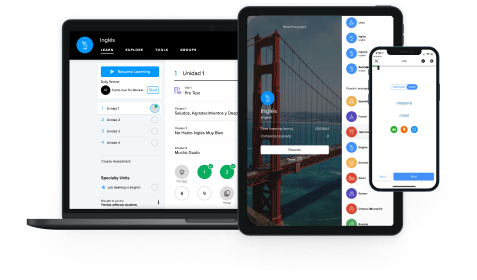
The library is a vessel of knowledge, filled to the brim with firsthand accounts of history and hidden gems as outlandish (and yet practical) as Microwave Cooking for One. Regardless of your patrons’ tastes, an untold story lurks in your library’s shelves. What’s that story, you ask?
The [hi]story of the library.
Library Origins
The origin of the library can be traced all the way back over 5,000 years ago, to ancient Mesopotamia. While these libraries may not have been filled by aspiring screenwriters or brooding teenagers creating new inventions in the lower-level makerspace like they are today, ancient libraries were archives of literature, chronicles and histories of the cities and countries they were in. These libraries were often very compact, only accessible by a few people and relied on the simplicity of a scribe and papyrus to create “books.”
The best-known ancient library was the Great Library of Alexandria in Egypt. Founded by Ptolemy I Soter around 300 B.C., the library is largely considered the first library designed in the tradition that we know and love. While still only accessible to a limited segment of the population, the library was quite impressive in its time. Its mission was to collect all the knowledge of the then-known world, and librarians made copies of every book that came into the port of Alexandria (the copies were for the original owners, though—the library kept the original book copy!)
At the height of its intellectual power, it is estimated that the library held over 750,000 texts in languages including Greek and various dialects from the Middle East, and held original texts by such literary giants as Homer, Aeschylus, Aristophanes and Eratosthenes. Unfortunately, the Library of Alexandria was accidentally burnt down by Julius Caesar almost 200 years later, paving the way for Shaggy’s hit single “It Wasn’t Me” to be released centuries before its time.
A House of Knowledge
Years and years later, the modern library began to truly take shape. While ancient Western libraries were more places to store ancient records, the spread of Christianity turned the library into a house of knowledge. The medieval library was often a part of a town’s church or monastery, where monks read and translated works to be read during service. However, not all libraries at this time were ecclesiastical: in the Middle East, libraries were starting to look a little more modern. By the 8th century, Iranian and Arabic civilizations had brought the craft of papermaking over from China, allowing for the development of modern books. By the 9th century, public libraries, dar al-‘ilm(halls of science), were common in Islamic cities.
As the centuries rolled on, libraries took on an increasingly prominent role. With the invention of the printing press in 1440, books became more easily dispersed throughout the world and literacy rates skyrocketed. The library came to the United States in 1700s, with Benjamin Franklin largely taking the lead on some of the practices of our public library system—like the idea of taking out and returning books—that are still intact today.
The Library Today
While the library has been steadily evolving over the last 2,500 years, remarkably, many of the biggest changes have happened within the last two decades. Libraries continue to house collections of printed materials like they did thousands of years ago, today they do even more. Today’s libraries have collections encompassing digital learning opportunities (like a certain language-learning software!), makerspaces and events open to everyone in the community.
Start Learning